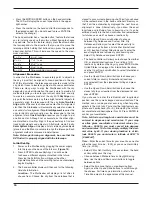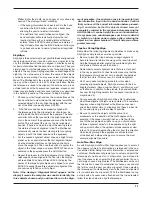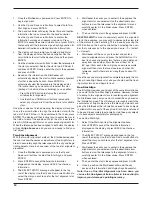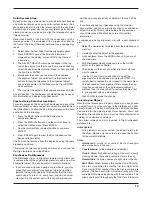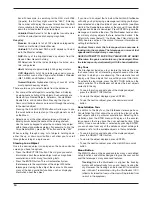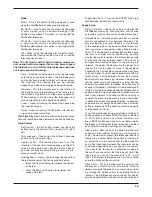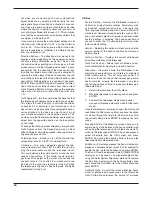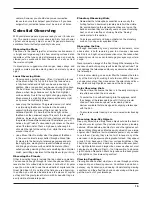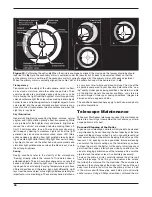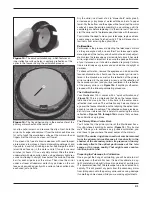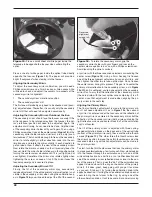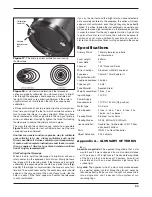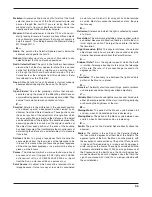
24
Alt-Azimuth Mounting: A telescope mounting using two inde-
pendent rotation axes allowing movement of the instrument
in Altitude and Azimuth.
Altitude: In astronomy, the altitude of a celestial object is its
Angular Distance above or below the celestial horizon.
Aperture: The diameter of a telescope’s primary lens or mir-
ror; the larger the aperture, the greater the telescope’s
light-gathering power.
Apparent Magnitude: A measure of the relative brightness of
a star or other celestial object as perceived by an observer
on Earth.
Arc minute: A unit of angular size equal to 1/60 of a degree.
Arc second: A unit of angular size equal to 1/3,600 of a
degree (or 1/60 of an arc minute).
Asterism: A small unofficial grouping of stars in the night sky.
Asteroid: A small, rocky body that orbits a star.
Astrology: The pseudoscientific belief that the positions
of stars and planets exert an influence on human affairs;
astrology has nothing in common with astronomy.
Astronomical unit (AU): The distance between the Earth and
the Sun. It is equal to 149,597,900 km., usually rounded off
to 150,000,000 km.
Aurora: The emission of light when charged particles from the
solar wind slams into and excites atoms and molecules in a
planet’s upper atmosphere.
Azimuth: The angular distance of an object eastwards along
the horizon, measured from due north, between the astro-
nomical meridian (the vertical line passing through the cen-
ter of the sky and the north and south points on the horizon)
and the vertical line containing the celestial body whose
position is to be measured. .
B —
Binary Stars: Binary (Double) stars are pairs of stars that,
because of their mutual gravitational attraction, orbit around
a common center of mass. If a group of three or more stars
revolve around one another, it is called a multiple system. It
is believed that approximately 50 percent of all stars belong
to binary or multiple systems. Systems with individual com-
ponents that can be seen separately by a telescope are
called visual binaries or visual multiples. The nearest “star”
to our solar system, Alpha Centauri, is actually our nearest
example of a multiple star system, it consists of three stars,
two very similar to our Sun and one dim, small, red star
orbiting around one another.
C —
Celestial Equator: The projection of the Earth’s equator on to
the celestial sphere. It divides the sky into two equal hemi-
spheres.
Celestial pole: The imaginary projection of Earth’s rotational
axis north or south pole onto the celestial sphere.
Celestial Sphere: An imaginary sphere surrounding the
Earth, concentric with the Earth’s center.
Collimation: The act of putting a telescope’s optics into per-
fect alignment.
D —
Declination (DEC): The angular distance of a celestial body
north or south of the celestial equator. It may be said to cor-
respond to latitude on the surface of the Earth.
E —
Ecliptic: The projection of the Earth’s orbit on to the celestial
sphere. It may also be defined as “the apparent yearly path
of the Sun against the stars”.
Equatorial mount: A telescope mounting in which the instru-
ment is set upon an axis which is parallel to the axis of the
Earth; the angle of the axis must be equal to the observer’s
latitude.
F —
Focal length: The distance between a lens (or mirror) and the
point at which the image of an object at infinity is brought to
focus. The focal length divided by the aperture of the mirror
or lens is termed the focal ratio.
J —
Jovian Planets: Any of the four gas giant planets that are at
a greater distance form the sun than the terrestrial planets.
K —
Kuiper Belt: A region beyond the orbit of Neptune extending
to about 1000 AU which is a source of many short period
comets.
l —
Light-Year (ly): A light-year is the distance light traverses in a
vacuum in one year at the speed of 299,792 km/ sec. With
31,557,600 seconds in a year, the light-year equals a dis-
tance of 9.46 X 1 trillion km (5.87 X 1 trillion mi).
M —
Magnitude: Magnitude is a measure of the brightness of a
celestial body. The brightest stars are assigned magnitude
1 and those increasingly fainter from 2 down to magnitude
5. The faintest star that can be seen without a telescope is
about magnitude 6. Each magnitude step corresponds to a
ratio of 2.5 in brightness. Thus a star of magnitude 1 is 2.5
times brighter than a star of magnitude 2, and 100 times
brighter than a magnitude 5 star. The brightest star, Sirius,
has an apparent magnitude of -1.6, the full Moon is -12.7,
and the Sun’s brightness, expressed on a magnitude scale,
is -26.78. The zero point of the apparent magnitude scale
is arbitrary.
Summary of Contents for 8993
Page 27: ...27 Appendix C Time Zones ...

